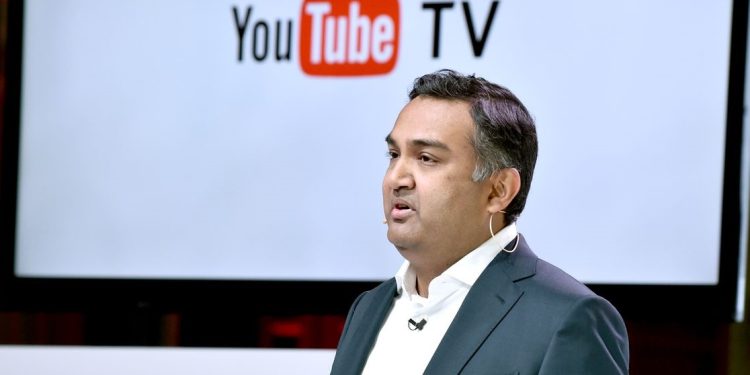Neal Mohan is a well-known person in the tech world who previously served as YouTube’s Chief Product Officer before being named CEO on Thursday. Since joining the company, he has played an important role in determining the platform’s growth and success.
Susan Wojcicki’s tenure as Chief Executive Officer (CEO) of streaming giant YouTube has come to an end after 25 years at Google. With her departure, the platform’s chief product officer (CPO), Neal Mohan, an Indian-American, will take over as CEO.
Wojcicki in a blog post wrote, “Today, after nearly 25 years here, I’ve decided to step back from my role as the head of YouTube and start a new chapter focused on my family, health, and personal projects I’m passionate about.”
While Wojcicki, 54, will assist the new team in its transition, she will also likely serve as an advisor to Google and Alphabet ‘in the longer term.’
She was one of the first employees of Google (now Alphabet), and she worked on several of the company’s main verticals, including AdSense, Google Image Search, and marketing, among others. She was also a member of the team that executed YouTube’s takeover, and she later climbed to the role of CEO of YouTube in 2014.
Wojcicki said of Mohan’s appointment as senior vice president and head of YouTube that he has a “wonderful sense” for the platform’s product, business, creators, and user communities.
Neal Mohan joined Google in 2007 after the internet giant acquired DoubleClick, and ascended through the ranks to become the SVP of Display and Video Ads, and then the CPO of YouTube in 2015. Mohan was also instrumental in the development of several of YouTube’s most important products, including YouTube Music, YouTube Premium, and Shorts.
Mohan, a Stanford graduate, has previously worked for Microsoft and currently serves on the boards of genomics startup 23andMe and fashion brand Stitch Fix. With this, Neal Mohan joins a rising number of Indian-American leaders at US-based digital behemoths such as Alphabet’s Sundar Pichai, Microsoft’s Satya Nadella, and Adobe’s Shantanu Narayen.
Mohan’s promotion comes at a time when India remains a major power in the streaming sector. According to a survey, India has the most users on YouTube with 467 million, followed by the United States with 246 million.
In 2021, Google predicts that YouTube will have contributed more than INR 100 billion to the Indian economy and will have directly supported 7.5 lakh employment. While the numbers are impressive, the streaming platform has been plagued by regulatory upheavals ranging from takedown orders to a crackdown on illegal content.
Notwithstanding the setbacks, YouTube has continued to grow rapidly in India due to simpler adoption and access to vernacular video content in several Indian languages. The platform also generates billions of views and dollars in income from content and advertising in a single year.
Google piloted shoppable content for users in the country last year, and the tech giant also revealed that programmes, mostly on healthcare, will soon be available in different languages on the streaming service. A few months ago, the business also created a learning management system (LMS) for video creators called ‘Courses,’ which is included in the YouTube app.
Its newer features, such as Shorts, which debuted in 2020, have also received positive feedback, with 30 billion views per day and 1.5 billion logged-in users globally by the end of November 2022.
While it has faced severe competition from competitors such as Meta-owned Instagram and other local players like Chingari and Josh, Neal Mohan’s stay will be the streaming platform’s first change of guard in nearly a decade.
Mohan’s focus on creator monetization has been one of his most significant contributions to YouTube. He has collaborated with creators to create new revenue streams such as Super Chat, Super Stickers, and channel memberships.
He has also assisted content providers in getting more value out of their work by enhancing ad targeting and offering better analytics.
Mohan is well-known for his ability to unite individuals and collaborate across teams. He’s good at seeing patterns and identifying new opportunities, and he’s not hesitant to take chances. His leadership has enabled YouTube to stay ahead of its competition and thrive.











